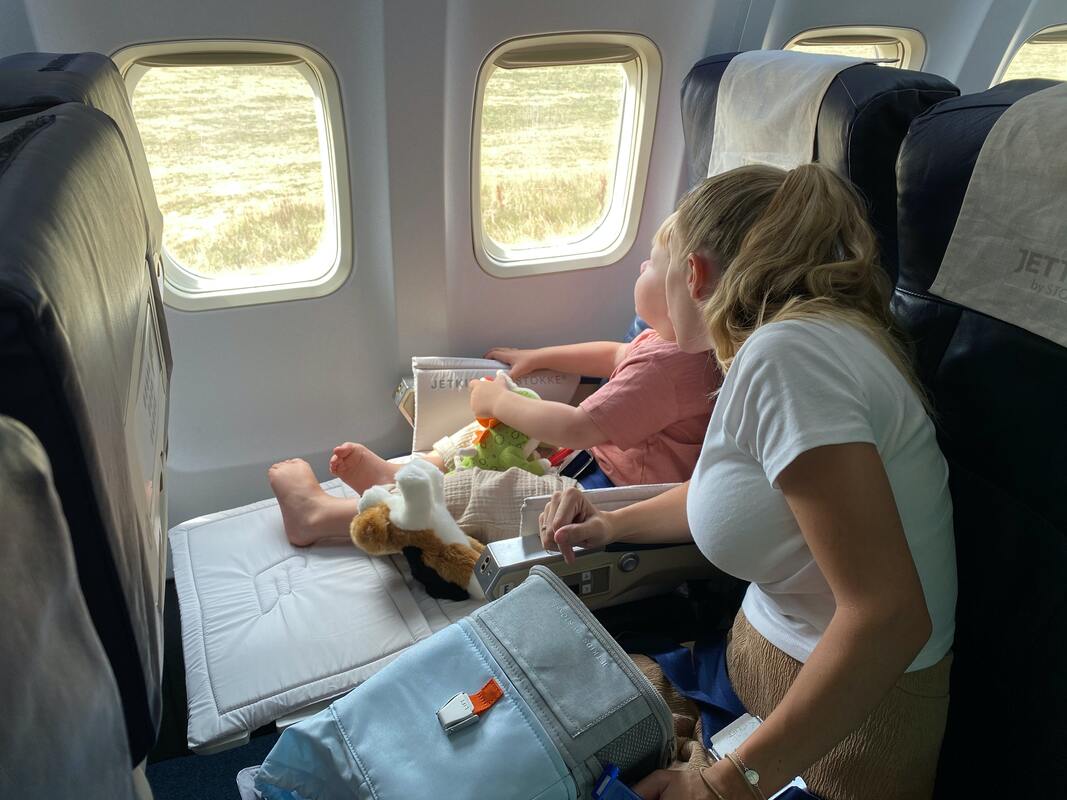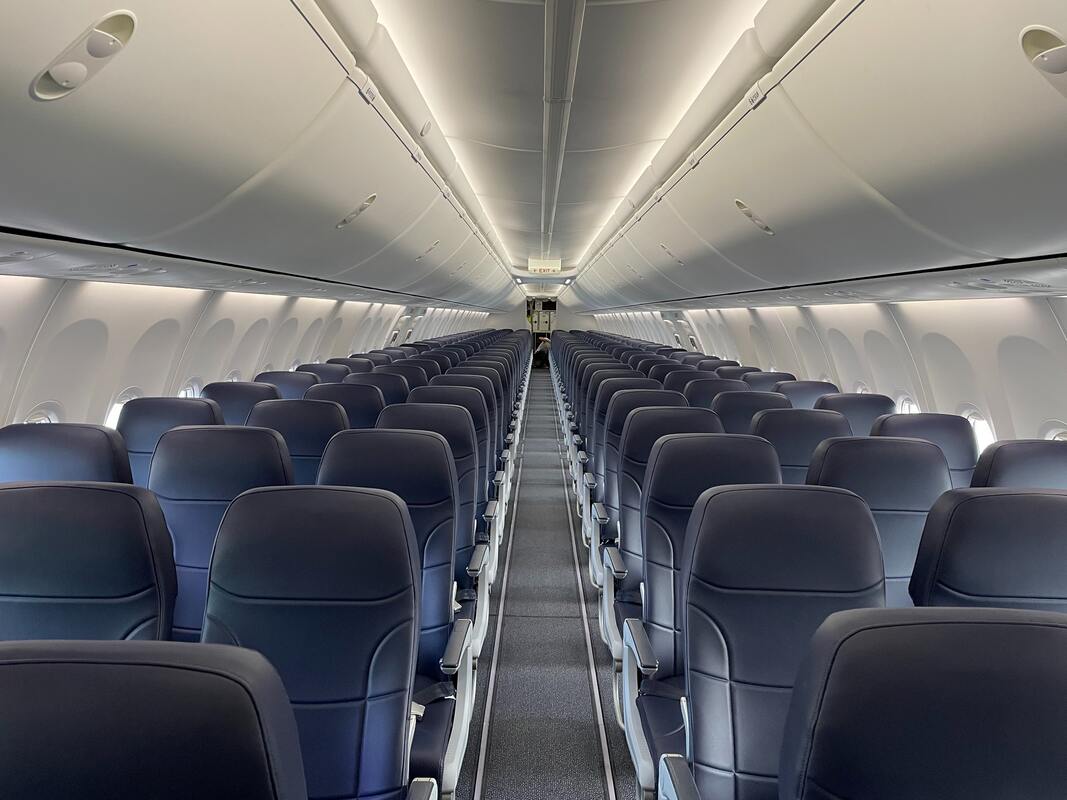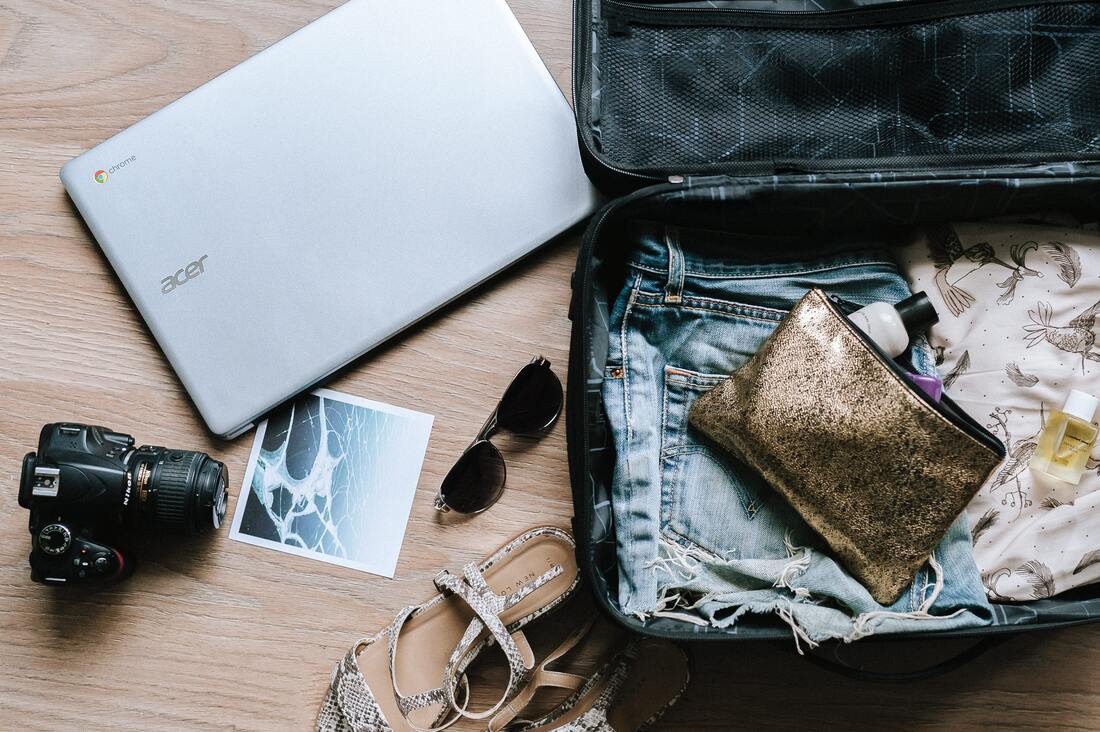|
Hey, there travel enthusiasts! If you're anything like me, planning a vacation can be both exciting and overwhelming. There are so many options to choose from and details to consider, it can make your head spin! But fear not, because today we're talking about the magic of near travel agents and how they can help you plan the perfect vacation.
First off, let's define what we mean by "near travel agent". Simply put, these are travel agents who are located close to you, typically in your local area. And why should you consider using one of these lovely folks to help plan your next adventure? Well, there are a ton of benefits! For one, near travel agents provide personalized service. They're not just some faceless entity on the internet, they're real people who you can meet face-to-face and develop a relationship with. They'll take the time to get to know you, your travel style, and your budget to help you plan a vacation that's perfect for YOU. Another great thing about near travel agents is their knowledge of the local area. These are people who live and work in the same community as you, so they have firsthand knowledge of the best destinations, activities, and deals available. They can recommend off-the-beaten-path spots that you might not have considered otherwise, and they'll know which tourist traps to avoid. And let's not forget about access to exclusive deals! Near travel agents have connections in the travel industry that can help them score discounts and perks that aren't available to the general public. They can help you save money on everything from flights to accommodations to activities, which can really add up throughout a vacation. So, that's just a taste of what we'll be covering in this blog post. Stay tuned for more tips and insights on how a near travel agent can help you plan the vacation of your dreams!
This post contains affiliate links, which means I may receive a small commission, at no cost to you, if you make a purchase through a link.
Personalized Service
We're diving into the topic of personalized service, and let me tell you, near travel agents are experts at making your vacation dreams a reality. So, what do we mean by personalized service? Basically, it's all about tailoring your vacation to your individual preferences and budget. A near travel agent will take the time to get to know you, your interests, and your budget, to create a vacation that's uniquely YOU. For example, let's say you're a foodie who's always dreamed of taking a culinary tour of Italy. A near travel agent can help you plan a trip that includes visits to local markets, cooking classes, and of course, plenty of delicious meals. Or maybe you're a nature lover who wants to explore the great outdoors. A near travel agent can help you find the best hiking trails, camping spots, and wildlife tours in your desired destination. But personalized service goes beyond just planning activities. Near travel agents can also help you find accommodations that fit your preferences and budget, whether that's a luxurious hotel or a cozy bed and breakfast. They can also help you navigate transportation options and plan out the logistics of your trip. And don't just take my word for it. Near travel agents have a track record of helping clients find their perfect vacation. I've heard stories of near travel agents who helped a couple plan the ultimate romantic getaway, complete with a private dinner on the beach. Or the near travel agent who helped a family with young kids plan a vacation that included activities for all ages, from amusement parks to children's museums. So, whether you have a specific vacation in mind or you're looking for some guidance on where to go and what to do, a near travel agent can help. They'll work with you every step of the way to create a personalized vacation that's tailored to your individual needs and preferences.
Knowledge of the Local Area
One of the best perks of using a near travel agent: their knowledge of the local area. These are people who live and work in the same community as you, so they know all the ins and outs of your desired vacation destination. So, what does this mean for your vacation planning? It means that a near travel agent can help you discover hidden gems that you might not have found otherwise. Sure, you could do a quick Google search and find the top tourist attractions in your destination, but what about those off-the-beaten-path destinations and activities that only the locals know about? For example, maybe you're planning a trip to New York City and you want to do more than just see the typical tourist attractions like the Statue of Liberty and Times Square. A near travel agent can recommend lesser-known spots like the High Line Park, which is a beautiful elevated park built on an old railway line, or the Tenement Museum, which offers a fascinating look into the lives of immigrant families in the early 20th century. Or maybe you're planning a beach vacation in Mexico and you want to do more than just lounge on the sand all day. A near travel agent can recommend snorkeling spots, hiking trails, and local markets where you can sample authentic Mexican cuisine. The bottom line is, a near travel agent can help you discover the true essence of your vacation destination. They know the best places to eat, shop, and play, and they can help you avoid tourist traps and crowded areas. And don't underestimate the value of their firsthand knowledge. These are people who have lived and worked in the local area for years, so they know the ins and outs of the community. They can give you insider tips on everything from the best times to visit certain attractions to the local customs and traditions. So, if you want to discover the hidden gems of your vacation destination, consider working with a near travel agent. They can help you plan a truly authentic vacation experience that you'll never forget!
Access to Exclusive Deals
Are you ready to save some money on your next vacation? Of course, you are! And lucky for you, near travel agents have access to exclusive deals and discounts that can help you do just that. So, what kind of deals are we talking about here? Well, near travel agents often have partnerships with hotels, airlines, and other travel companies, which means they can offer special rates and discounts that you won't find anywhere else. These deals can range from discounted hotel rates to free upgrades to exclusive perks like free breakfast or spa credits. For example, a near travel agent might be able to secure a discounted rate at a luxury resort in the Caribbean, or they might be able to get you a free upgrade to a suite at a hotel in Paris. And don't forget about those exclusive perks – a near travel agent might be able to arrange for a private tour of a popular attraction or a free wine tasting at a local vineyard. But it's not just about getting a good deal. Near travel agents can also help you save money in other ways. For example, they can help you find the most affordable flights and transportation options, or they can recommend budget-friendly activities and restaurants in your destination. And let's not forget about the time and stress you'll save by working with a near travel agent. They'll take care of all the research and planning, so you don't have to spend hours scouring the internet for the best deals. So, if you want to save money on your next vacation and get access to exclusive deals and discounts, consider working with a near travel agent. They'll help you get the most bang for your buck and create a vacation that's both affordable and unforgettable.
Peace of Mind
Let's talk about something that's always on our minds when planning a vacation: peace of mind. We all want to relax and enjoy our time away without worrying about unexpected issues or problems. And that's where a near travel agent comes in. One of the biggest benefits of working with a near travel agent is the peace of mind they provide. They're there to handle any unexpected issues that may arise during your trip, so you don't have to stress about it. Whether it's a flight delay, a lost passport, or a hotel issue, a near travel agent has the expertise and resources to handle it quickly and efficiently. But it's not just about handling unexpected issues. A near travel agent can also make the vacation planning process stress-free from the start. They'll work with you to create an itinerary that meets your needs and preferences, and they'll handle all the logistics so you don't have to. They'll book your flights, hotels, transportation, and activities, and they'll keep you informed every step of the way. And if you're the type of person who worries about every little detail, a near travel agent can help ease those concerns. They'll provide you with all the information you need before your trip, including important travel documents, packing tips, and local customs and traditions. They'll even be available to answer any questions or concerns you have during your trip, so you can focus on having fun and making memories. So, if you want a stress-free, worry-free vacation, consider working with a near travel agent. They'll provide you with the peace of mind you need to truly relax and enjoy your time away. And who knows? Maybe you'll even come back feeling more refreshed and rejuvenated than ever before.
Summing up the Advantages of Using a Near Travel Agent
Well, friends, it looks like we've reached the end of our journey. But before we go, let's recap all the amazing benefits of using a near travel agent for your next vacation. First of all, near travel agents provide personalized services that can help you find a vacation that suits your preferences and budget. They have firsthand knowledge of the local area and can recommend off-the-beaten-path destinations and activities. Plus, they have access to exclusive deals and discounts that can help you save money. But perhaps the biggest benefit of working with a near travel agent is the peace of mind they provide. They can handle unexpected issues that may arise during your trip, and they can make the vacation planning process stress-free from start to finish. So, if you're planning your next vacation, I highly encourage you to consider working with a near travel agent. They have the expertise, resources, and knowledge to create a truly unforgettable vacation experience for you. And don't forget, a near travel agent can help you find your perfect vacation. Whether you're looking for a relaxing beach getaway, a thrilling adventure, or a cultural immersion, a near travel agent can help you create the vacation of your dreams. So, what are you waiting for? Reach out to a near travel agent today and start planning your perfect vacation!
0 Comments
Traveling with medication can be challenging, but proper planning and preparation can be a smooth and stress-free experience. First and foremost, it is important to know the rules and regulations of the country you are traveling to. Some medications may be legal in your home country but may be considered illegal or controlled substances in another country. Therefore, it is important to research the country's laws regarding medication, especially if you are carrying prescription medications.
This post contains affiliate links, which means I may receive a small commission, at no cost to you, if you make a purchase through a link.
Traveling with medication in the United States
Traveling with medication in the United States requires similar considerations as traveling internationally, but with some specific regulations to keep in mind. First and foremost, it is important to keep all medications in their original packaging with the prescription label intact. This can help avoid any confusion or questions at security checkpoints.
It is also important to note that certain medications, such as opioids and other controlled substances, are subject to specific regulations and laws. In general, these medications should be kept in a carry-on bag and be accompanied by a copy of the prescription or a letter from the prescribing healthcare provider. It is also recommended to bring a list of all medications being carried, including over-the-counter medications and supplements. When traveling by air, following the Transportation Security Administration (TSA) guidelines for carrying medications is important. These guidelines allow for the transportation of medically necessary liquids, gels, and aerosols in excess of the standard 3.4-ounce limit for carry-on bags. These items should be placed in a separate, clear plastic bag and declared to the TSA officer at the security checkpoint. For medications that require refrigeration, such as insulin or certain injectable medications, it is important to pack them in an insulated bag with ice packs or other cooling mechanisms. Some airlines may also allow the use of onboard refrigeration units for these types of medications. It is also important to note that some states in the United States may have specific regulations or requirements for carrying certain medications, such as medical marijuana. It is recommended to research these regulations and requirements prior to travel to avoid any potential legal issues. Traveling with medication in the United States requires proper planning and adherence to specific regulations and guidelines. Keeping medications in their original packaging, bringing copies of prescriptions or letters from healthcare providers, and following TSA guidelines for carrying medically necessary liquids and gels can all contribute to a stress-free travel experience.
Take a few moments to read my article, How to Pack for a Week in Carry-On Luggage, to read more about bringing your medications on board with you.
Traveling with Medication Safely
Once you have determined the legality of your medication in the country you are traveling to, it is important to pack your medications in a safe and secure manner. Keeping medications in their original packaging with the prescription label intact can help avoid any confusion or questions at security checkpoints. Additionally, packing medications in a carry-on bag can prevent any potential loss or theft of important medication.
Traveling with medications that need to be refrigerated
Traveling with medications that need to be refrigerated can be challenging, but there are ways to ensure that the medications remain safe and effective during the trip. It is important to speak with the prescribing healthcare provider to determine if there are alternative medications that do not require refrigeration. If there are no alternatives, the healthcare provider may be able to provide guidance on how to safely transport and store the medication during travel. If the medication must be refrigerated, it is recommended to use a portable medical refrigerator or cooler that can maintain the required temperature. These coolers can be purchased online or through medical supply stores and are designed to keep medications at the proper temperature during travel. Before departing, it is important to check the temperature of the medication to ensure that it is within the proper range. It is also recommended to bring extra ice packs or cooling packs to ensure that the medication stays at the required temperature during the trip. When traveling by air, it is important to inform the airline of the need for refrigerated medication and to request assistance with storing the medication during the flight. It may also be necessary to carry a letter from the prescribing healthcare provider explaining the need for refrigeration. It is important to note that medications that require refrigeration should not be frozen, as this can cause the medication to lose effectiveness. Therefore, it is important to carefully monitor the temperature of the medication during travel and to follow any additional instructions provided by the healthcare provider. Traveling with medications that require refrigeration can be challenging, but there are ways to ensure that the medication remains safe and effective during the trip. It is important to speak with the prescribing healthcare provider and to use a portable medical refrigerator or cooler to maintain the required temperature. It is also important to monitor the temperature of the medication during travel and to inform the airline of any special needs related to refrigeration.
Traveling with Insulin
Traveling with insulin requires careful planning and preparation to ensure that the medication remains safe and effective during the trip. Insulin is a temperature-sensitive medication that requires refrigeration and therefore requires special handling during travel. Before departing, it is important to speak with the prescribing healthcare provider to obtain a travel letter explaining the need for insulin and any other medical supplies. The travel letter should include the patient's name, diagnosis, and a list of medications and medical supplies needed for the trip. It is also important to bring enough insulin and medical supplies to last for the entire duration of the trip, as well as extra supplies in case of unexpected travel delays or emergencies. Insulin should be kept in its original packaging with the prescription label intact, and stored in a cooler or insulated bag with ice packs or cooling gel packs to maintain the required temperature. When traveling by air, it is important to inform the airline of the need for insulin and to request assistance with storing the medication during the flight. Insulin and other medical supplies can be carried on as a personal item, and it is recommended to bring a doctor's note explaining the need for the supplies. It is also important to familiarize oneself with the local laws and regulations regarding insulin and other medications at the destination. In some countries, insulin may be considered a controlled substance and require additional documentation or authorization to bring into the country. In addition, it is important to monitor blood glucose levels during travel and to make any necessary adjustments to insulin doses based on changes in diet, activity level, and time zone changes. It is recommended to carry a blood glucose meter and extra testing supplies, as well as a supply of fast-acting carbohydrates in case of hypoglycemia. Traveling with insulin requires careful planning and preparation to ensure that the medication remains safe and effective during the trip. It is important to speak with the prescribing healthcare provider, bring enough insulin and medical supplies, and inform the airline of the need for special handling. It is also important to familiarize oneself with local laws and regulations, monitor blood glucose levels, and carry a supply of fast-acting carbohydrates.
Traveling with medication internationally
Traveling with medication internationally requires some additional considerations beyond traveling with medication within the United States. It is important to research the laws and regulations of the countries being visited, as some medications may be illegal or considered controlled substances in certain countries. Before departing, it is recommended to bring a copy of the prescription or a letter from the prescribing healthcare provider for all medications being carried. This documentation should include the generic name of the medication, the dosage, and the reason for taking the medication. Additionally, it is important to bring enough medication to last for the entire duration of the trip, as finding the same medication in a foreign country may be difficult or impossible. When traveling by air, following the guidelines set by the Transportation Security Administration (TSA) for carrying medications is important. In addition to keeping medications in their original packaging with the prescription label intact, it may also be necessary to declare medications at the security checkpoint and provide additional documentation, such as a doctor's note or a prescription label written in English. For medications that require refrigeration, it is important to pack them in an insulated bag with ice packs or other cooling mechanisms. Some airlines may also allow the use of onboard refrigeration units for these types of medications. It is also important to be aware of any potential language barriers when traveling to non-English speaking countries. It may be helpful to bring a translated copy of the prescription or a letter from the healthcare provider to ensure proper communication with customs or security officials. Traveling with medication internationally requires proper planning and preparation. It is important to research the laws and regulations of the countries being visited, bring enough medication to last for the entire trip, and follow TSA guidelines for carrying medications. Additionally, it may be necessary to provide additional documentation or translations to ensure proper communication with customs or security officials.
Traveling with medication to Mexico
Travel from the United States to Mexico is very common. Mexico is a popular destination for American tourists, with millions of Americans traveling to Mexico each year for vacations, business trips, and other purposes. The proximity of the two countries, as well as the shared cultural and historical ties, make Mexico a convenient and attractive destination for many Americans. In addition to tourism, there are also significant economic and cultural ties between the United States and Mexico. The two countries share a border and have a large volume of trade and commerce, with many American businesses having operations in Mexico and vice versa. The laws and regulations regarding traveling with medications to Mexico can be complex and vary depending on the specific medication being carried. Some medications that are legal in the United States may be considered controlled substances or illegal in Mexico, and it is important to research these laws before traveling. According to the Mexican General Health Law, certain medications, including opioids, benzodiazepines, and other controlled substances, require a valid prescription from a Mexican doctor in order to be brought into the country. In addition, some medications may require additional documentation, such as a letter from the prescribing healthcare provider or a translated copy of the prescription. It is important to note that possession of controlled substances without a valid prescription can result in serious legal consequences, including fines, imprisonment, and deportation. Therefore, it is recommended to research the laws and regulations regarding specific medications prior to travel, and to consider consulting with a healthcare provider or legal professional if there are any concerns. When traveling with medications to Mexico, it is recommended to keep medications in their original packaging with the prescription label intact, and to bring enough medication to last for the entire duration of the trip. It is also recommended to declare all medications at customs and to provide any necessary documentation or translations. In summary, the laws and regulations regarding traveling with medications to Mexico can be complex and vary depending on the specific medication being carried. It is important to research these laws before traveling, and to follow recommended guidelines for carrying medications, including keeping medications in their original packaging, bringing enough medication to last for the entire trip, and declaring all medications at customs.
Traveling with medication in changing time zones
Traveling with medication in changing time zones can be challenging, but with proper planning and adjustment, it can be managed effectively. For medications that are taken at specific times during the day, such as insulin or other medications for chronic conditions, it is important to adjust the timing of the medication to the new time zone as soon as possible. One way to do this is to gradually adjust the medication schedule prior to departure, by taking the medication at the same time in the new time zone as the previous day's dose. This can help ease the transition and minimize the risk of missed or extra doses of medication. It is also important to keep track of the local time in the new time zone and set reminders for medication schedules accordingly. This can be done using a watch with multiple time zones or a smartphone app that can track the local time. If traveling by air, it is important to factor in any potential delays or changes in flight schedules, as this can also affect medication schedules. It is recommended to carry enough medication in carry-on luggage to last for at least a few days in case of any unforeseen delays. Traveling with medication in changing time zones requires proper planning and adjustment to ensure proper medication schedules are maintained. Gradually adjusting medication schedules prior to departure, keeping track of local time, and carrying enough medication in carry-on luggage can all contribute to a stress-free travel experience.
Traveling with medication requires proper planning and preparation. Knowing the laws and regulations of the country you are traveling to, packing medications in a safe and secure manner, considering the temperature sensitivity of certain medications, bringing copies of prescriptions or letters from healthcare providers, and adjusting medication schedules for time zone changes can all contribute to a stress-free and enjoyable travel experience.
Head over to InsiderMama to learn more about How to Fly with Medication!
Traveling with an infant can be a challenging and rewarding experience. On the one hand, you get to experience the joy of traveling with your little one, introducing them to new sights, sounds, and cultures. On the other hand, you need to be prepared for the unexpected, from missed flights to lost luggage to cranky babies.
This post contains affiliate links, which means I may receive a small commission, at no cost to you, if you make a purchase through a link.
As someone who has traveled with infants before, here are some tips that I have found helpful:
Plan ahead When traveling with an infant, it's important to plan ahead as much as possible. This includes booking your flights and accommodations well in advance and also making a list of everything you'll need to bring with you. This can include things like a stroller, car seat, portable crib, baby carrier, and plenty of diapers, wipes, and formula.
FAA-approved car seats
When traveling with an infant or young child, it's important to ensure that they are properly secured in a car seat on the airplane. The Federal Aviation Administration (FAA) has specific guidelines for car seats that can be used on board. Here are some tips to help you choose an FAA-approved car seat for your child:
It's important to choose an FAA-approved car seat and ensure that it is installed properly on the airplane seat. By following these guidelines, you can ensure that your child has a safe and comfortable flight.
Pack smart
When it comes to packing for a trip with an infant, less is more. You don't want to be lugging around a lot of unnecessary gear, so focus on the essentials. Pack a few changes of clothes for your baby, as well as some toys and books to keep them entertained. Also, be sure to bring along any medications your baby might need, such as fever reducers or allergy medicine. When flying with a baby, it's important to take steps to protect their ears during takeoff and landing. The change in air pressure can cause discomfort or pain in a baby's ears, but there are several ways to help alleviate this. One way is to breastfeed or bottle-feed the baby during takeoff and landing, as swallowing can help equalize the pressure in the ears. Another way is to use special earplugs designed for infants or noise-canceling headphones. You can also try using a pacifier or providing a favorite toy or comfort item to distract the baby during the flight. By taking these steps to protect your baby's ears, you can help ensure a more comfortable and enjoyable flight for both you and your child.
You may also want to read my article, 6 Pro Tips on How to Pack Efficiently, as I outline the best way to maximize space when traveling.
Be flexible
Traveling with an infant means being flexible and adaptable. You never know when your baby might need to take a nap, or when you might need to stop and change a diaper. Be prepared to adjust your itinerary and take things at a slower pace than you might otherwise.
Take advantage of early boarding
Many airlines offer early boarding for families with young children, which can be a real lifesaver. This gives you extra time to get settled on the plane before the crowds start to board, and can make the whole experience a lot less stressful.
Stay calm
Remember to stay calm and take things one step at a time. Traveling with an infant can be stressful, but if you stay calm and keep a positive attitude, you'll be able to handle whatever comes your way.
Book a bassinet or bulkhead seat
When booking your flight, try to reserve a bassinet or bulkhead seat. These seats often have more legroom and provide easier access to the aisle, making it easier for you to tend to your baby's needs. Additionally, a bassinet can be a lifesaver during long-haul flights as it provides a comfortable place for your baby to sleep.
Keep your baby entertained
Long flights can be tough on babies, so it's important to keep them entertained as much as possible. Bring along some of their favorite toys, books, or games to keep them occupied. You can also download some child-friendly movies or TV shows onto your phone or tablet to watch with your baby.
Dress your baby comfortably
When traveling with an infant, it's important to dress them in comfortable clothes. Avoid clothes with lots of buttons or zippers as they can be difficult to take on and off during diaper changes. Instead, opt for clothes with snaps or stretchy materials that are easy to get on and off.
Take breaks
If you're taking a long road trip or flight, make sure to take breaks every few hours. This will give your baby a chance to stretch their legs and get some fresh air. If you're driving, plan your route so that you can stop at rest areas or parks along the way.
Be prepared for emergencies
Make sure you're prepared for emergencies. Bring along a first aid kit, as well as any necessary medications or medical supplies. Make sure you have contact information for your baby's pediatrician, as well as the contact information for local hospitals or urgent care centers at your destination.
Liquids and traveling with an infant
When it comes to traveling with an infant, one thing you need to be mindful of is the restrictions on liquids that are allowed on flights. The Transportation Security Administration (TSA) has strict guidelines for liquids that can be brought onboard. Here are some tips to help you navigate the restrictions on liquids when traveling with an infant:
It's important to be aware of the rules and regulations when traveling with liquids and an infant. Pack only what you need and be prepared for extra screening at the security checkpoint. With a little preparation, you can navigate the restrictions and ensure that you have everything you need for a comfortable and safe trip with your baby.
Breast milk pumping on board a plane
Breast milk pumping on board a plane is allowed by the TSA, but there are some important considerations to keep in mind.
Breast milk pumping on a plane is allowed by the TSA, but it requires some extra planning and preparation. By following these tips and guidelines, you can ensure that you have a comfortable and stress-free trip with your baby.
From my personal experience, traveling with an infant can be both challenging and rewarding. It's important to stay calm and flexible and to be prepared for anything that comes your way. Remember to pack smart, dress your baby comfortably, and take breaks as needed. Above all, enjoy the experience and create lasting memories with your little one!

This post contains affiliate links, which means I may receive a small commission, at no cost to you, if you make a purchase through a link.
Using only carry-on luggage for a long trip requires careful planning and organization. Start by making a packing list of essentials and choosing the right carry-on luggage that fits airline size restrictions. Pack smart by rolling clothes and using packing cubes, wear bulky items on the plane, and utilize the extra space of a personal item if allowed by the airline. Plan your outfits in advance and be mindful of liquids, making sure they are in containers that hold 3.4 ounces or less and stored in a clear, quart-sized bag. By following these tips, you can efficiently pack all the necessary items for your trip in carry-on luggage.
Make a packing list
Making a packing list is an important step in preparing for a trip, especially when traveling with only carry-on luggage. To make a packing list, start by writing down all the items you need to bring, including essentials, clothing, toiletries, and any other items specific to your trip. Prioritize the items on your list and make sure you have everything you need. A packing list will help you avoid overpacking and ensure that you don't forget any important items. It is also a good idea to check the weather forecast for your destination and make sure you pack accordingly. By creating a packing list, you can streamline the packing process and make sure you have a stress-free and enjoyable trip. I have created the image below for you to easily save to your phone or computer.
Here is a sample packing list for a week-long trip using only carry-on luggage. I made some of these items clickable links for products that I personally recommend for packing in carry-on luggage.
Clothing:
Toiletries:
Electronics:
Miscellaneous:
Remember to plan your outfits ahead of time and choose clothing items that can be easily mixed and matched. This will help you maximize the space in your carry-on luggage and ensure you have a variety of options for your trip.
Choose the right luggage
Choosing the right size carry-on luggage is crucial when traveling with only a carry-on bag. Airlines have size restrictions for carry-on luggage, so check your airline's specific requirements before purchasing a bag. A good carry-on luggage should fit in the overhead compartment or under the seat in front of you and have enough room to store all your essentials for the trip. Consider purchasing a carry-on with multiple compartments to help you stay organized, and choose a bag with durable materials to protect your belongings during travel. In addition, think about the type of trip you are taking and what items you need to bring with you. By choosing the right size carry-on luggage, you can make sure that your trip is comfortable and stress-free.
Pack smart
Packing smart is essential when traveling with only carry-on luggage for a week or more. To maximize space, consider rolling your clothes instead of folding them. This will help reduce wrinkles and save space in your bag. Utilize packing cubes to organize smaller items, and place heavier items at the bottom of your bag to balance the weight. When packing liquids, make sure they are in containers that hold 3.4 ounces or less, and store them in a clear, quart-sized bag in a separate compartment of your carry-on. Wear bulky items, such as a jacket or sneakers, on the plane instead of packing them, and consider bringing a personal item, such as a purse or a small backpack, to have extra space for items you need during the flight. By packing smart, you can ensure that your carry-on luggage is organized and efficient, making your trip more enjoyable.
Wear your bulky items
Wearing your bulky items on the plane is a smart way to save space in your carry-on luggage. When traveling with only a carry-on bag, every inch of space counts, so wearing items such as jackets, sneakers, or even a sweater can free up room in your luggage. Additionally, wearing bulky items can also provide extra comfort during the flight, especially if you tend to get cold on planes. It's important to consider the climate at your destination, as well as the comfort of your flight when deciding what items to wear. By wearing your bulky items on the plane, you can make the most of your carry-on luggage and have a more comfortable and stress-free trip.
Consider a personal item
Bringing a personal item onto the plane can be a smart way to utilize extra space and make your travel experience more comfortable. Personal items, such as a purse, a laptop bag, or a small backpack, can be a convenient place to store items you need during the flight, such as snacks, a book, or a tablet. Some airlines also allow you to bring a personal item in addition to your carry-on bag, giving you more space for your belongings. When choosing a personal item, make sure it meets the size requirements of your airline and can fit comfortably under the seat in front of you. By bringing a personal item onto the plane, you can make the most of your limited space and have a more organized and comfortable trip. I love bringing a personal item bag, in which I can fit my laptop, iPad, phone, purse, and snacks all in one bag. This helps consolidate what I'm carrying and also allows me to bring more items onto the plane with me, than if I would have tried to carry them separately.
Plan your outfits
Planning your outfits in advance is a key step in efficiently packing for a trip, especially when traveling with only carry-on luggage. Consider the activities you have planned and the climate at your destination, and pack outfits that can be mixed and matched to maximize the number of outfits you can create with limited items. Aim for versatile pieces that can be dressed up or down and be mindful of the colors you choose, as items that coordinate well can help you get more use out of each piece. When packing, lay out each outfit and consider if you need additional items, such as a scarf or a hat, to complete the look. By planning your outfits in advance, you can ensure that you have a variety of options while also maximizing the space in your carry-on luggage.
Be mindful of liquids
Being mindful of liquids is important when packing for a trip, especially when traveling with only carry-on luggage. Airlines have restrictions on the size and amount of liquids you can bring in your carry-on bag, so it's important to be aware of these restrictions. Make sure all liquids, including shampoo, conditioner, toothpaste, and any other items, are in containers that hold 3.4 ounces or less and store them in a clear, quart-sized bag. This bag should be easily accessible for security screenings. Consider purchasing travel-sized containers for your liquids to save space in your carry-on bag. By being mindful of liquids, you can ensure that you have everything you need for your trip while also following the regulations set by the airline. I really like these two travel kits, which I have linked below for you. One is geared toward women and the other towards men. You could individually purchase these products, but it is very convenient, and less expensive, to have them all in one toiletry kit.
Traveling with medication in carry-on luggage
Traveling with medication in carry-on luggage is generally recommended, as it allows the traveler to have quick access to their medication and ensures that the medication is not lost or damaged during transit. However, there are certain guidelines and regulations that must be followed when traveling with medication in carry-on luggage. The Transportation Security Administration (TSA) has specific rules regarding medication in carry-on luggage. Medications are allowed in carry-on bags, but they must be screened separately from other items and must be declared to the TSA officer at the security checkpoint. It is also recommended to keep medication in its original packaging with the prescription label intact, as this can help avoid any confusion or questions at the security checkpoint. Liquid medication, including eye drops, insulin, and cough syrup, is also allowed in carry-on bags, but must be placed in a clear plastic bag and be limited to 3.4 ounces (100 milliliters) or less per container. The bag must be taken out of the carry-on bag and placed in a bin for screening. It is also recommended to carry a doctor's note or prescription for any medications that may be questioned by TSA or customs officials, especially for medications that are not commonly known or may be considered controlled substances. The note should include the name of the medication, the dosage, and the reason for the medication. When traveling internationally, it is important to research the laws and regulations regarding medication at the destination. Some countries may have restrictions or require additional documentation for certain medications, and it is important to be prepared to avoid any issues at customs. Traveling with medication in carry-on luggage is generally recommended, but there are specific guidelines and regulations that must be followed. It is important to declare medication to TSA officers, keep medication in its original packaging, and carry a doctor's note or prescription for any medications that may be questioned. When traveling internationally, it is important to research the laws and regulations regarding medication at the destination to avoid any issues at customs. Read more about traveling with medications in my article, Traveling with Medication Comprehensive Guide, to learn more tips on medications and travel.
By following these tips, you should be able to successfully pack for your long trip using only a carry-on luggage.
Saving money at Walt Disney World can be a challenge, but with a few tips and tricks, you can enjoy all the magic of Disney without breaking the bank. Here are 8 tips for saving money on your next Disney World vacation.
This post contains affiliate links, which means I may receive a small commission, at no cost to you, if you make a purchase through a link.
Walt Disney World Money-Saving Tip #1
Consider staying off-property: While staying at a Disney resort can be magical and offers many benefits, including transportation and extra magic hours, it can also be expensive. Consider staying at a nearby hotel or vacation rental, which can save you a significant amount of money. My husband and I have 5 children, so we need 2 hotel rooms when we travel anywhere. This gets really expensive quickly! One plan we set into place years ago was to put all of our expenses onto the Hilton Honors American Express credit card. We pay off the card each month, so we don't accrue any interest, but earn tons of Hilton hotel points by spending a decent amount each month. There is no annual fee for the card, so it's a no-brainer for us! I'm going to link the Hilton Honors Amex card here for you, and if you join with my link you'll receive 80,000 bonus points after your first $1000 in purchases on the card within the first 3 months. That's enough points for a free night (plus you will probably have some leftover towards your next night depending on where you book). Seriously this card is the best!
Walt Disney World Money-Saving Tip #2
Plan your meals wisely: Eating at Disney World can be costly, so consider eating one meal per day outside of the park, utilizing the children's menu which offers smaller portion sizes and lower prices, or bringing your own food into the park. Yes, Walt Disney World allows outside food to be brought into the parks. However, they have restrictions on what can be brought in, such as no glass containers, no alcohol, and no large coolers. Bags, backpacks, and coolers can be no larger than 24" long x 15" wide x 18" high. Consider a backpack cooler with padded adjustable straps, like the one featured below.
Walt Disney World Money-Saving Tip #3
Take advantage of free and "included with admission" activities: There are many free activities available at Disney World, such as parades, fireworks shows, and character meet-and-greets. Be sure to take advantage of these free options to save money on your trip. Plus Disney Springs has no entrance or parking fees, so add that to your vacation itinerary for sure! Let me give you a quick rundown of Disney Springs if you haven't heard of it yet. Disney Springs is a shopping, dining, and entertainment complex located at the Walt Disney World Resort in Lake Buena Vista, Florida. It features a variety of stores, restaurants, and attractions, including boutiques, specialty shops, and well-known brands. Additionally, Disney Springs offers live entertainment, such as musical performances and street performers, making it a popular destination for tourists and locals alike. If your kids want to join in the fun outdoors at Disney Springs, grab them a couple of bubble wands before your trip. Bubble wands are often seen around the property.
Walt Disney World Money-Saving Tip #4
Buy your tickets in advance: Buying your tickets in advance can often save you money, and you can also avoid long lines at the park gate. Walt Disney World Resort also often offers special ticket deals and packages for guests. These can include discounts on multi-day tickets, seasonal promotions, and special offers for Florida residents, military personnel, and other groups. The exact specials available vary depending on the time of year and other factors, so it's a good idea to check the Disney World website or consult with a travel agent for the most up-to-date information.
Walt Disney World Money-Saving Tip #5
Avoid souvenirs: While it can be tempting to buy souvenirs at Disney World, these items can quickly add up. Consider shopping ahead on Amazon for Disney toys, books, and matching family shirts (these are very popular in the parks), and bring these items with you on your trip to surprise your family.
Walt Disney World Money-Saving Tip #6
Have you ever heard the expression that time is money? Our next tip goes straight to that idea. I recommend that you use the Genie+ service. Genie+ is a paid skip-the-line service that allows guests to enter through a special line called the Lightning Lane (think of the former FASTPASS Return Entrance) rather than the standby line. This can be a huge benefit and time-saver on in-demand rides. Money saving tip: the price of lightening lane and Genie Plus vary based on demand. You can usually save money on these passes during the week and during the off-season.
Walt Disney World Money-Saving Tip #7
Travel during the off-season: If possible, consider traveling to Disney World during the off-season, when crowds are smaller and prices are lower. Think January and February. Then skip the busy Spring Break time which seems to span the month of March, and spill into April. The end of April and May show lower crowds as well, but the summer months tend to be very busy.
Walt Disney World Money-Saving Tip #8
Use park hopper tickets wisely: If you have park hopper tickets, make sure to use them wisely by planning your day around the less crowded parks and taking advantage of extra magic hours. The Park Hopper hours will run from 2:00 PM till the park closes each day. The most recent Park Hopper hours are now available to guests by checking the Park Hours calendar and the My Disney Experience app, as they may start earlier or later depending on the day and park.
Saving money at Walt Disney World takes a bit of planning, but it is definitely worth it. With these tips, you can enjoy all the magic of Disney while staying within your budget. Sign up for the Hilton American Express now to start accumulating points, get your souvenir shopping done early and grab your Mickey ears, and get to planning the best trip ever!
If you are interested in learning how to save money on Disney gift cards, I'm going to recommend you read my article, "How to Save Money on Disney Gifts Cards Today." I'll walk you through several options that you have to get your Disney gift cards for less.
The City of Love, Paris, is a large European city and the capital of France. The city boasts a large collection of art, awe-inspiring architecture, delicious cuisine, and authentic culture.
Musée d'Orsay
Located on the Left Bank of the Siene, this breathtaking museum, once a Beaux-Arts railway station, now houses a vast collection of French Impressionist art, as well as other artistic items created between 1848 and 1914. Luxembourg Gardens Before the French Revolution, these formal gardens were only open to royalty, but they are now one of Paris' most popular relaxation spots. Cathédrale Notre-Dame de Paris This famous cathedral, a Gothic masterpiece whose construction began in the 12th century, stands on the Île de la Cité and serves as the city's symbolic heart. The Notre Dame Cathedral will be closed to tourists and worshippers until further notice due to the tragic fire that has destroyed portions of it. Tours may pass by, but do not enter Notre Dame Cathedral. "Notre Dame de Paris: A Celebration of the Cathedral" touches on art, architecture, cinematography, the literary world, history and more in this amazingly illustrated book.
This post contains affiliate links, which means I may receive a small commission, at no cost to you, if you make a purchase through one of the links.
Moulin Rouge
Since 1900, this risqué world-famous cabaret has been thrilling audiences in a 19th-century windmill. Basilique du Sacre-Coeur de Montmartre Built by the French government in the aftermath of the Franco-Prussian War, this Montmartre landmark, a 19th-century basilica features a large medieval dome with beautiful views of the city. Sainte-Chapelle The Sainte-Chapelle is France's finest royal chapel, with a truly extraordinary collection of stained-glass windows. Louis IX built it in the mid-13th century in the heart of the royal residence, the Palais de la Cité. It was constructed to house the relics of Christ's Passion. The Sainte-Chapelle is a jewel of French Gothic architecture, with a unique collection of fifteen glass panels and a large rose window forming a veritable wall of light. UNESCO has designated this site as a world heritage site. Seine River This well-known river flows from east to west through the heart of Paris, dividing the Left and Right Banks.
Palais Garnier
The Palais Garnier, also recognized as Opéra Garnier, is a 1,979-seat opera house located on Place de l'Opéra in Paris's 9th arrondissement. Emperor Napoleon III commissioned its construction for the Paris Opera from 1861 to 1875. This theatre hosts opera, ballet and chamber music performances. Eiffel Tower The Eiffel Tower is a wrought-iron lattice tower on Paris's Champ de Mars. The tower is named after the engineer Gustave Eiffel, whose firm designed and built it. It was built from 1887 to 1889 as the centerpiece of the 1889 World's Fair and was known locally as "La dame de fer." This massive landmark, completed in 1889, was initially despised by many Parisians but is now a famous symbol of French civic pride.
Arc de Triomphe
The Arc de Triomphe was built on Napoleon I's orders in 1806, to commemorate the victories of his Grande Armée. The monument, inspired by the great arches of antiquity, combines the commemorative with the symbolic, and it has always played a significant role in the national republican awareness. Every evening, a flame is lit on the tomb of the Great War's Unknown Soldier. An exhibition depicts the history and explains its symbolic significance, both nationally and internationally. The terrace offers spectacular views of the city and its great sweeping avenues both during the day and at night. Louvre Museum The Louvre, which houses Leonardo da Vinci's Mona Lisa, is regarded as the world's greatest art museum, with an unparalleled collection of items spanning the entire spectrum of art throughout the ages.
Paris Guide Books
This is just a brief glimpse into what Paris has to offer. Picking up a guide book or two is going to be essential for your travels.
Love to travel, but seem to always be struggling in the packing department? Whether you are taking a month-long road trip across the country, hopping a plane for a week-long excursion in Paris, or going to visit friends for the weekend, packing is about to become a whole lot easier with these easy-to-follow tips and tricks!
Tip #1 – Roll your Clothes
Did you know that rolling your clothes, instead of folding them, saves you nearly half the space in your suitcase?! This is probably the most effective and easiest tip to put into action. Begin with your bulkiest items like sweaters and jeans. Then move down to mid-sized clothing such as t-shirts and shorts, and finally finish up with socks and underwear. Tip #2 – Place your Rolled Clothing into Packing Cubes Sometimes the idea of a bag within a bag seems tedious and unnecessary. This is not the case with packing cubes. They are a must if you are trying to make the most out of the space in your suitcase. Place your rolled clothes into packing cubes, trying to keep your “categories” of clothing together. For example, jeans and sweaters in the larger size cubes, and socks and underwear in the small cubes. Bonus comes when you arrive at your destination, and you can place your neatly packed cube straight into the hotel dresser drawer. If you are traveling with multiple members of your family, I suggest bringing different colored or designed packing cubes, to help keep everyone's items easily identifiable. There are several patterns and colors to choose from if you select the TravelWise packing cubes, which are the sets that my family uses. Oh, and did I mention that they are machine washable too!
This post contains affiliate links, which means I may receive a small commission, at no cost to you, if you make a purchase through one of the links
Tip #3 – Bring Travel-Sized Toiletries
With air-travel restrictions on the size of liquids allowed through security, travel size toiletries are going to become your best kept travel secret. You can either purchase travel sized toiletries pre-filled, or use empty leakproof TSA approved travel containers and pour your favorite shampoo, conditioner and body wash to bring along with you. Make sure to check with your hotel or final destination if they provide items such as hair dryers and irons. This will save a lot of space if you do not need to travel with these bulky items. Tip #4 – Utilize Hidden Space Bringing spare pairs of shoes with you? Don’t let the space inside go to waste! Stuff jewelry, socks, or other small items in a plastic baggie and then inside your spare shoes that are being packed. Pro Tip – Wear your heaviest pair of shoes, and heaviest jacket onto the plane instead of packing them. Tip #5 – Neutral Colors are your Friend Plan to re-wear many of the items that you are packing. Pick a neutral color pallet, so you can mix and match these basics easily to assemble multiple outfits out of a few articles of clothing. A pair of navy or black pants or jeans is easily going to match with several tops. The same advice goes with shoes. While you may love to have a different pair of shoes for every outfit, this isn’t practical for packing within limits. Instead pack two pairs of neutral shoes that will go with the pallet of your travel clothing. Tip #6 – Carry-on Times Two Many airlines will allow two carry-ons per person. Make sure to utilize each piece you are allowed, even if you don’t need it on the way there, you may want the extra space for souvenirs for your trip back. For airlines such as Frontier and Spirit, who may charge for even a carry-on bag, you will want to check out this personal item bag! I was able to get 3 outfits, toileterie, pajamas, drawstring backpack, my wallet, 2 pairs of sunglasses (with hard eyeglass cases) and a few odds and ends all in this bag!
Packing properly is an important step in ensuring a smooth and stress-free trip. The key to successful packing is to be organized and methodical. Start by making a list of what you need to bring and prioritize the items based on their importance and the length of your trip. Pack your luggage in layers, starting with heavier items at the bottom and lighter items on top. Roll your clothes instead of folding them to save space and prevent creases. Use packing cubes or compartments to separate items and maximize space. Remember to leave some empty space in your luggage for souvenirs or purchases. Finally, make sure to label your luggage with your name, contact information, and destination to prevent any confusion or loss. By following these tips, you'll be able to pack efficiently and enjoy your trip with peace of mind.
|
Bless Myself BlogJen AmbroseCertified Life Coach, Mother of Five, Wife, Christian, Homeowner & Friend Archives
April 2023
Categories
All
|





























































 RSS Feed
RSS Feed